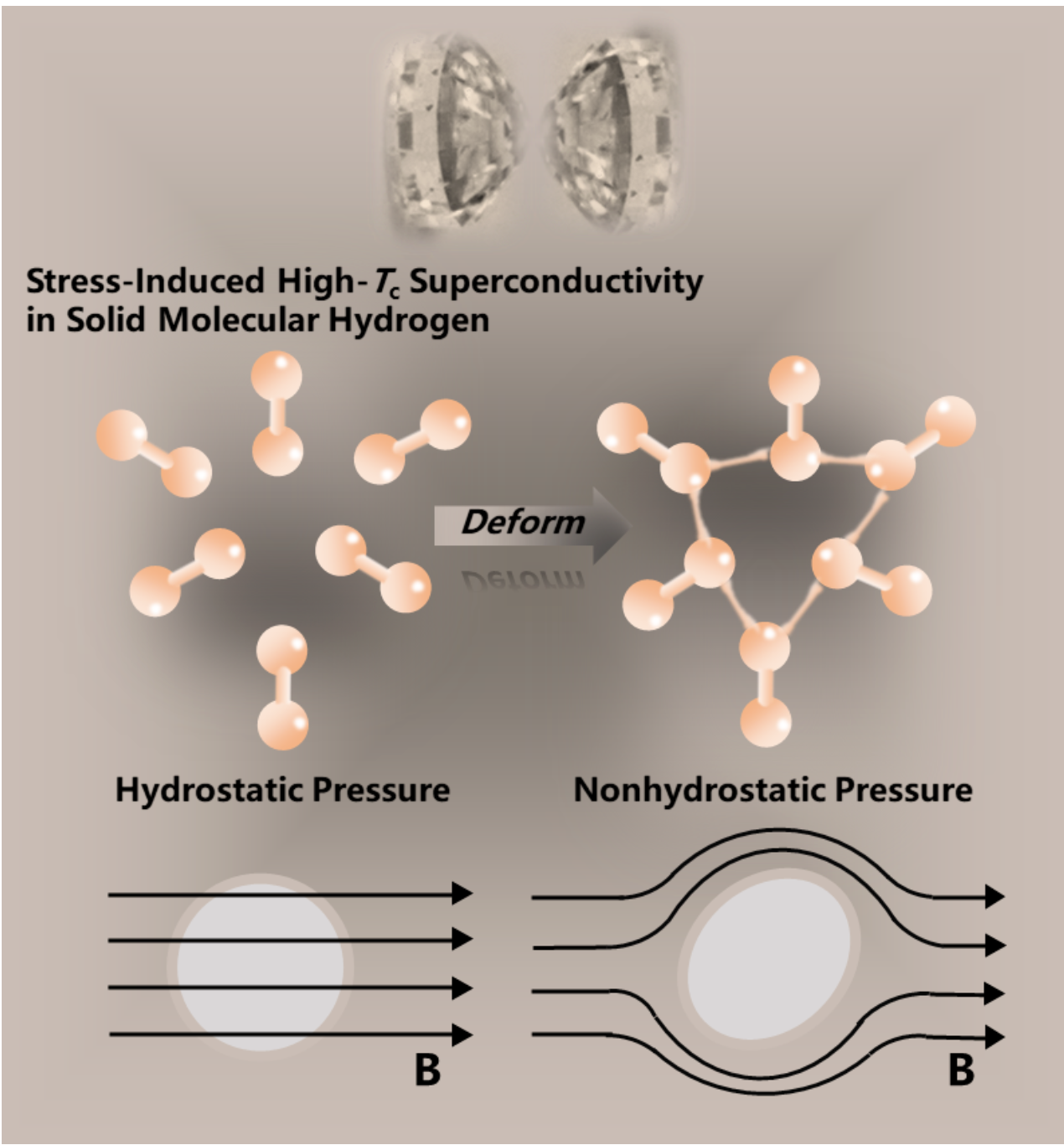Xianqi Song1 Chang Liu1 Quan Li1 Russell J. Hemley2 Yanming Ma3 Changfeng Chen4
1. State Key Laboratory of Superhard Materials, College of Physics, Jilin University, Changchun 130012, China
2. Departments of Physics, Chemistry, and Earth and Environmental Sciences, University of Illinois Chicago, Chicago, IL 60607
3. State Key Laboratory of Superhard Materials, College of Physics, Jilin University, Changchun 130012, China
4. Department of Physics and Astronomy, University of Nevada, Las Vegas, NV 89154
*X.S. and C.L. contributed equally to this work.
Solid molecular hydrogen has been predicted to be metallic and high-temperature superconducting at ultrahigh hydrostatic pressures that push current experimental limits. Meanwhile, little is known about the influence of nonhydrostatic conditions on its electronic properties at extreme pressures where anisotropic stresses are inevitably present and may also be intentionally introduced. Here we show by first-principles calculations that solid molecular hydrogen compressed to multimegabar pressures can sustain large anisotropic compressive or shear stresses that, in turn, cause major crystal symmetry reduction and charge redistribution that accelerate bandgap closure and promote superconductivity relative to pure hydrostatic compression. Our findings highlight a hitherto largely unexplored mechanism for creating superconducting dense hydrogen, with implications for exploring similar phenomena in hydrogen-rich compounds and other molecular crystals.

Related link:
https://doi.org/10.1073/pnas.2122691119